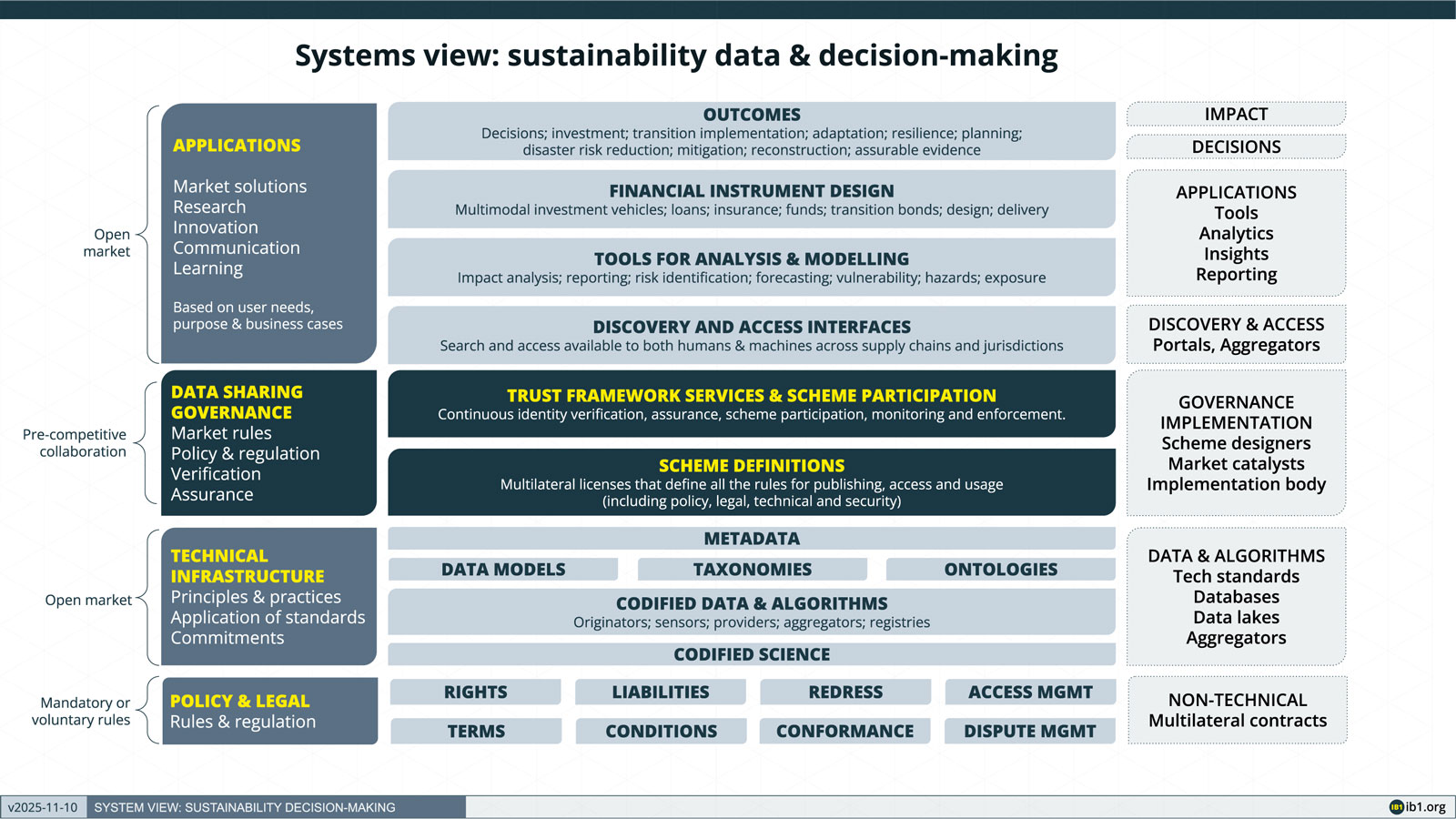v2025-11-14

This diagram shows how sustainability data can flow through a (NOVA-aligned) structured, governed market to enable trusted decisions. It begins with raw inputs and ends with real-world outcomes, and maps the various steps in-between, including how the sharing of data is governed.
At its foundation are codified science, raw data, and algorithms. These come from science and standards bodies via sensors or related data providers. They are structured through harmonised (using existing standards) models, taxonomies, and ontologies, and stored or managed through technical systems such including databases, data lakes, and aggregation platforms. This layer provides the basic ingredients for sustainability intelligence.
In parallel, the policy and legal layer defines the rights, responsibilities, and protections that govern the underlying data. This includes statutory and voluntary rules, contract structures, redress mechanisms, liabilities, access management, terms and conditions, and pathways for conformance and dispute resolution. Policy frames what should be done and the legal frameworks encode these requirements into enforceable commitments for all participants. Together, these provide guardrails to ensure data sharing is lawful, ethical, and accountable, enabling organisations to operate with clarity and confidence.
Sitting above this layer are the technical infrastructure and metadata practices that ensure consistency, provenance, and interoperability. Principles, standards, and commitments guide how data is produced, maintained, and exchanged.
Together, these feed into Scheme definitions: where multilateral licences define the full rules for publishing, accessing, and using data. The Scheme rules cover policy, legal, technical, and security needs, and are the basis for pre-competitive collaboration.
To drive adoption and make the Scheme rules operational, a data governance process brings together domain experts, implementation bodies, and market catalysts, policy, assurance practices, and verification. This layer ensures that the market can ‘go far together’.
To enable scale, Schemes can be delivered using Trust Frameworks (which address identity verification, assurance processes, onboarding, monitoring and enforcement). These enable safe participation for organisations across supply chains and sectors to share data effectively.
Above this, discovery and access interfaces allow both humans and machines to find, request, and use data. Portals and aggregators can surface what is available using standard web processes for search.
The next layer brings in tools for analysis. These turn data into insight, ranging from impact assessments to risk identification, forecasting to exposure analysis, vulnerability assessments to reporting. These are the analytical bridge between raw data and meaningful insights.
All these tools can feed into a wide range of applications: analytics platforms to reporting systems, dashboards to insights engines, or tools that support financial, operational, and policy decisions.
Using these insights, organisations can design or support financial instruments, including loans, insurance, multimodal investment, transition bonds, or other products that depend on consistent, assurable evidence (the data).
At the top are outcomes that deliver impact: market-facing solutions, actionable research and derisked innovation, leading to better decisions: targeted investment, effective transition planning and implementation, improved resilience and adaptation, disaster risk reduction, mitigation, and reconstruction.
Combined, this diagram shows how sustainability data can be made usable, dependable, and valuable to support society-wide decision-making.
Examples:
